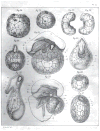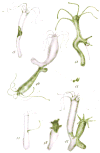Rethinking differentiation: stem cells, regeneration, and plasticity
- PMID: 24679530
- PMCID: PMC4074550
- DOI: 10.1016/j.cell.2014.02.041
Rethinking differentiation: stem cells, regeneration, and plasticity
Abstract
Cell differentiation is an essential process for the development, growth, reproduction, and longevity of all multicellular organisms, and its regulation has been the focus of intense investigation for the past four decades. The study of natural and induced stem cells has ushered an age of re-examination of what it means to be a stem or a differentiated cell. Past and recent discoveries in plants and animals, as well as novel experimental manipulations, are beginning to erode many of these established concepts and are forcing a re-evaluation of the experimental systems and paradigms presently being used to explore these and other biological process.
Copyright © 2014 Elsevier Inc. All rights reserved.
Figures





References
-
- Barker N, van Es JH, Kuipers J, Kujala P, van den Born M, Cozijnsen M, Haegebarth A, Korving J, Begthel H, Peters PJ, et al. Identification of stem cells in small intestine and colon by marker gene Lgr5. Nature. 2007;449:1003–1007. - PubMed
-
- Brand U, Fletcher JC, Hobe M, Meyerowitz EM, Simon R. Dependence of stem cell fate in Arabidopsis on a feedback loop regulated by CLV3 activity. Science. 2000;289:617–619. - PubMed
Publication types
MeSH terms
Grants and funding
LinkOut - more resources
Full Text Sources
Other Literature Sources
Medical
Miscellaneous

